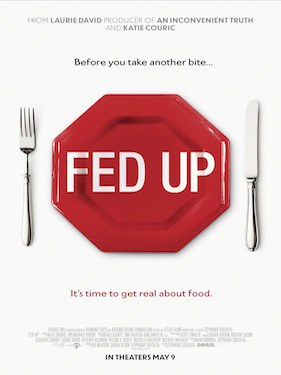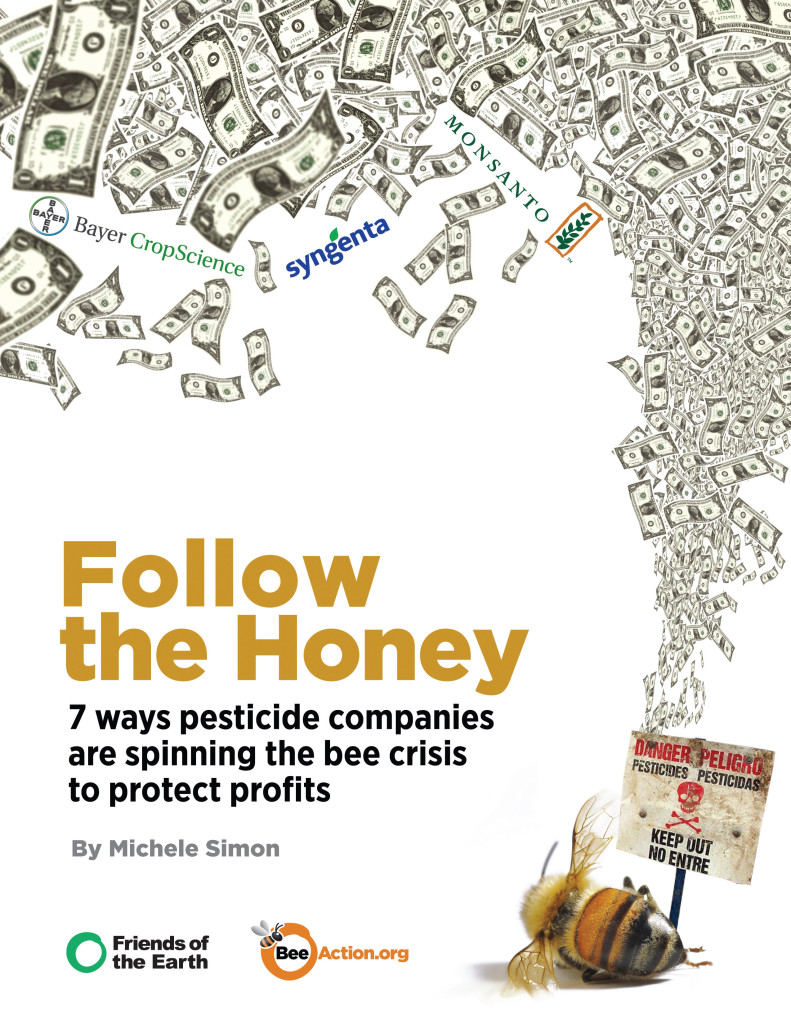The East Coast has been getting most of the attention lately on the state by state effort to label genetically-engineered food. Vermont recently passed a bill and New York State’s bill is now moving. But let’s not forget about the western states, which are also critical to this fight. Right to know advocates in Oregon and Colorado are currently gathering signatures to place measures on the November ballot. Both of these states have a good shot at convincing voters to pass GMO labeling.

Industry Tactics
Every State Counts: Support GMO Labeling in Oregon and Colorado
Big Food Freaking Out Over Fed Up Movie
Am thrilled to be featured in a new powerful film by Laurie David and Katie Couric that features an all-star line-up.

If you search for “Fed Up movie” on Google, the first link you see is not the film’s website, but rather a page from the Grocery Manufacturers Association called “Fed Up Facts“. It’s a silly and desperate attempt by Big Food to respond to the star-power that has Katie Couric appearing all over the mainstream media spreading a message that the food industry doesn’t want you to hear. (GMA denies that “the food industry purposely advertises unhealthy foods to children”. It must happen by accident.)
The film really pulls no punches aiming to dispel the junk food industry’s strongest talking points: it’s all a matter of personal responsibility; we can just exercise our way to health; and we don’t need government regulation. Even Let’s Move is criticized for placing too much emphasis on physical activity and industry partnerships. But as I told the filmmakers, the first lady is in the wrong wing of the White House. (That quote didn’t make the final cut, alas. See this review saying the film lacks policy solutions, which I mostly agree with.)
How Big Chicken Took Over America
Last month, an unusual scuffle played out between two federal agencies over a controversial proposal by the U.S. Department of Agriculture to increase the speed of kill lines for poultry in slaughterhouses. But with testing from Consumer Reports last year revealing that 97 percent of raw chicken breasts purchased at retailers are contaminated with harmful bacteria, and with poultry workers already suffering from numerous job-related injuries, advocacy groups are vigorously opposed to the idea. The rule would also reduce the number of USDA inspectors required to ensure food safety, transferring some of that responsibility to the chicken and turkey companies themselves. But as one former inspector (who worked both for the USDA and the chicken industry) warned, plant workers are not properly trained for inspection, and they are too scared for their jobs to speak up. That’s why groups such as Food and Water Watch are taking out newspaper ads calling the proposal the “Filthy Chicken Rule.” Read rest at Al Jazeera America …
Boston Law School Sells Out to Big Alcohol Front Group
By Jason Blanchette and Michele Simon
Overconsumption of alcohol remains the third largest cause of preventable death in the United States, causing roughly 88,000 Americans to die prematurely each year. Moreover the costs of alcohol problems to society top $200 billion annually. The alcohol industry, in attempting to deflect blame away from its incessant and exploitative marketing practices, especially to youth, loves to keep the focus on illegal activities such as drunk driving. (Never mind that most alcohol harm stems from disease, crimes, and other forms of injury.)
How a PepsiCo flavor partner fooled Wall Street and the press
The food and beverage giant’s new sweetener causes confusion with claims of FDA approval
For years, the processed-food industry has searched in vain for a low-calorie sweetener that actually tastes good, let alone one that retains the flavor profile of the underlying product. In 2010, the food and beverage giant PepsiCo formed an agreement with the flavor company Senomyx to “focus on the discovery, development and commercialization of sweet enhancers and natural high-potency sweeteners.” That partnership appears to be paying off; there is tremendous profit potential for both companies, given the recent dips in soda sales. Which makes the deceptive nature of a recent press release that much more troubling. Read rest at Al Jazeera America …
Want to Legalize Marijuana? Learn from Regulating Alcohol and Tobacco
By Michele Simon and Leslie Zellers
Some commentators have compared the current effort to legalize marijuana to the post-prohibition days of alcohol. And many advocates for marijuana legalization are making the comparison to alcohol. Indeed the entire campaign in Colorado in 2012 was called “Regulate Marijuana like Alcohol.” But if supporters of marijuana legalization are serious about this comparison, they might learn some valuable lessons from both alcohol and tobacco control. In each of these areas, advocates have spent decades figuring out what works and what doesn’t in regulating legal products that also have the potential for harm.
Big Food defies first lady with own nutrition label
Last week, with an assist from first lady Michelle Obama, the Food and Drug Administration announced a set of proposed improvements — the first in 20 years — to the nutrition facts label found on most food packages. Read rest at Al Jazeera America …
Big Soda’s Front Group Arrives Early in San Francisco
Ballot measure could become first sugary drink tax in California
Earlier this month, lawmakers in San Francisco introduced a bill that would tax sugary beverages at two cents per ounce, thereby setting off the latest big fight with Big Soda. The estimated $31 million in annual revenue would go to local health programs. Voters will decide the measure’s fate in November, with a two-thirds majority being required to pass.
Suing Big Food for Financial Liability – Lawyer Responds
Earlier this month, POLITICO’s Helena Bottemiller stirred things up with “The plot to make Big Food Pay” about the potential for tobacco-style litigation brought by states to recoup medical expenses incurred for diet-related health problems. Several other media outlets responded with knee-jerk negative reactions to the idea, mostly out of ignorance. So Paul McDonald, the attorney pitching the idea to several states, is now setting the record straight. He allowed me to post his op-ed in POLITICO, in which he aims to explain the legal theory and moral rationale. Download the article here.














